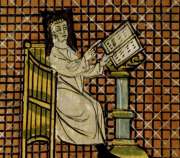Pagina: 1
Le roman de Renart
: Renard et Drouin le moineau (I)
 Sceneggiatura 2010-08-09 (7504 visite) Sceneggiatura 2010-08-09 (7504 visite)
Le roman de Renart
: Les enfants de Drouin (II)
 Sceneggiatura 2010-08-09 (5149 visite) Sceneggiatura 2010-08-09 (5149 visite)
Le roman de Renart
: La peur de Renard (III)
 Sceneggiatura 2010-08-09 (4740 visite) Sceneggiatura 2010-08-09 (4740 visite)
Le roman de Renart
: Mâtin (IV)
 Sceneggiatura 2010-08-10 (5079 visite) Sceneggiatura 2010-08-10 (5079 visite)
Le roman de Renart
: De la viande et du vin (V)
 Sceneggiatura 2010-08-10 (5012 visite) Sceneggiatura 2010-08-10 (5012 visite)
Le roman de Renart
: La punition de Renard (VI)
 Sceneggiatura 2010-08-10 (6381 visite) Sceneggiatura 2010-08-10 (6381 visite)
Le roman de Renart
: Pinte et Chantecler (I)
 Sceneggiatura 2010-08-12 (4775 visite) Sceneggiatura 2010-08-12 (4775 visite)
Le roman de Renart
: Chantecler et Chantelin (II)
 Sceneggiatura 2010-08-12 (5059 visite) Sceneggiatura 2010-08-12 (5059 visite)
Le roman de Renart
: Le trompeur trompé (III)
 Sceneggiatura 2010-08-12 (5698 visite) Sceneggiatura 2010-08-12 (5698 visite)
Pagina: 1 |
|

|
|
|
|
Biografia Pierre de Saint Cloud
This skillful and cultured poet brought the adventures of Renart the Fox, known previously only in Latin, to a wider, French-speaking public. The two earliest branches of the Roman de Renart, II and Va (ca. 1174–77), which relate the love affair of Renart and Hersent the she-wolf, are attributed to him.
Though he imitated Ysengrimus for three episodes (“Renart and Chantecler,” “Renart and the Titmouse,” “Renart and Hersent”) and Marie de France for another (“The Fox and the Crow”), “Renart and Tibert the Cat” is his own invention. He pokes fun at the legal system, pontifical legates and certain religious institutions, princes and nobles, through a subtle parody, intended largely to evoke laughter, of the chansons de geste and Arthurian romance. He was read and imitated by French and foreign authors of beast epics, such as Jacquemart Gielée, Heinrich der Glîchezâre, and Chaucer), by fabulists and writers of exempla (Eudes de Cheriton, Nicole Bozon, Jacques de Vitry), and by Philippe de Novare. After 1180, he assisted Alexandre de Paris in reworking the Roman d’Alexandre into dodecasyllabic laisses.
Le roman de Renart dans la littĂ©rature française et dans les littĂ©ratures Ă©trangères au moyen âge. Toronto: University of Toronto Press, 1963.
|





